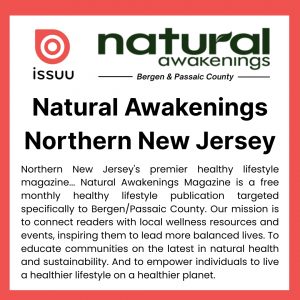The Food Artisans Next Door
Homemade Delicacies, Direct from Our Neighbors
Neighbors in most states can now legally buy fresh breads, cookies and preserves from local food artisans.
The locavore movement of eating locally produced foods continues to expand, thanks to 42 states passing cottage food laws that permit community members to make certain foods at home to sell to neighbors. Some enterprises use a contract packer to deliver on a scale not possible domestically, or even operate from a commercially licensed production facility.
From sauerkraut and distinctive jams and organic jellies to gluten- or peanut-free cakes and regional artisanal breads, some of the most flavorful products are being produced with no chemical preservatives, artificial colors or other laboratory ingredients. Nearly all are made in small batches, and usually by the owner. Many source local ingredients or serve special dietary needs largely underserved or ignored by larger food businesses.
“In a sharing economy, individuals look less to big chain stores for their food needs and more to each other, making fresher, tastier and often healthier foods more accessible,” explains Janelle Orsi, co-founder of the Oakland, California, Sustainable Economies Law Center (SELC), citing its Policies for Shareable Cities report partnered with the nonprofit Shareable.
The Specialty Food Association reports that sales of specialty foods—primarily at grocery retailers, but also cottage operators via farmers’ markets and direct orders when allowed by their state—grew 22 percent from 2010 to 2012, topping $85 billion.
Healthy as it Comes
“All of our products are made by hand and in small batches daily,” says Ruth Wardein, co-owner, with Andrew Amick, of Epiphany Gluten Free Bakery, in Naples, Florida, which she launched from her home kitchen. Besides gluten-free cookies, cakes and breads, she’s always “perfecting” her Paleo cookies, brownies and pancake mix.
Paleo recipes contain no grains, dairy, yeast or refined sugars, explains Wardein. “They require nut and seed flours, coconut oil and natural sugars like honey or maple syrup. So they are naturally higher in protein and fiber and lower in carbs than the average gluten-free recipe.”
“We’re experimenting with the community supported agriculture model with local fruit,” says Erin Schneider. She and her husband, Rob McClure, operate Hilltop Community Farm, in LaValle, Wisconsin, which produces value-added products with organically grown crops. “We have salsas, pickles and jams. Our black currant and honey jam is sold before it’s made. Rob’s garlic dills have their own following.” Wisconsin’s cottage food law restricts sales to only high-acid foods.
Quality over Quantity
In Royal Oaks, California, Garden Variety Cheese owner, cheesemaker and shepherd Rebecca King feeds her 100 milking ewes organically raised, irrigated pasture grass and brewer’s grain to yield award-winning farmstead easier-to-digest sheep cheeses from her Monkeyflower Ranch. “Many first-time customers like my story as a small producer and want to buy direct from the farm. They keep buying because of the taste,” says King.
“My marinara and pizza sauces are made in small batches by hand in a home kitchen, enabling us to hot pack them to retain the ingredients’ natural favors,” says Liz James, owner of The Happy Tomato, in Charlottesville, Virginia. Her sauces are also low in sodium and contain no sugar, saturated fat or gluten. James’ production is facilitated by Virginia’s home food processor license, which lets her work from home and sell wholesale. Whole Foods Market is among her major retail accounts.
When home-based cottage food businesses are spurred into expansion to keep up with demand, a situation sometimes complicated by state limits on sales volume, many opt for renting space in the growing number of incubator, or community, kitchens nationwide. “We did farmers’ markets for three years and went from seven customers to thousands,” says Wardein, who now rents a commercial kitchen space. “Returning customers are the momentum that has pushed us forward.”
“By growing food in and around our own neighborhoods and cities, we decrease our dependence on an oftentimes unjust and ecologically destructive global food system and build stronger, more connected and resilient communities,” affirms Yassi Eskandari-Qajar, director of SELC’s City Policies program.
“We think it’s important to produce what grows well on our soil and then sell it, so that ecology drives economics, rather than vice versa,” says Schneider. “Random things prosper in our area, like paprika peppers, elderberries, hardy kiwi, garlic, pears and currants. It’s our job as ecologically-minded farmers to show how delicious these foods can be.”
Lisa Kivirist and John Ivanko are co-authors of the new book Homemade for Sale, a guide for launching a food business from a home kitchen, plus ECOpreneuring, Farmstead Chef and Rural Renaissance. Learn more at HomemadeForSale.com.

























